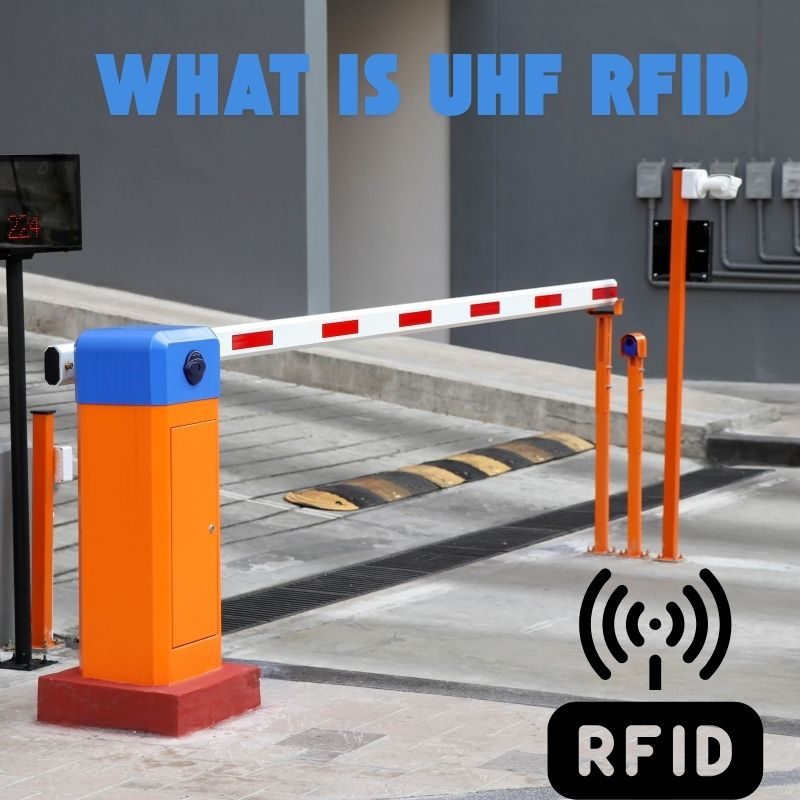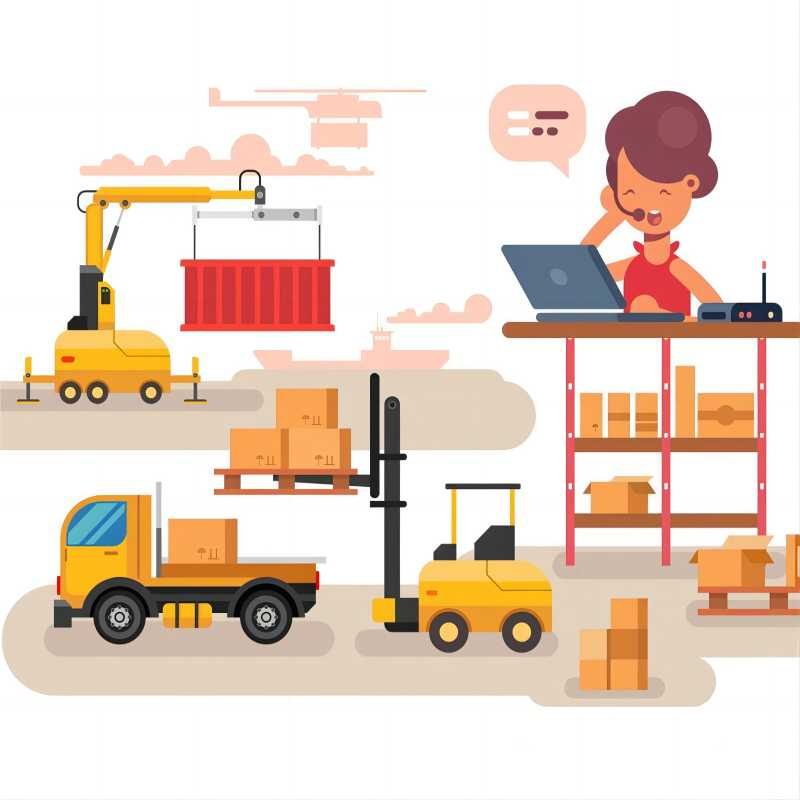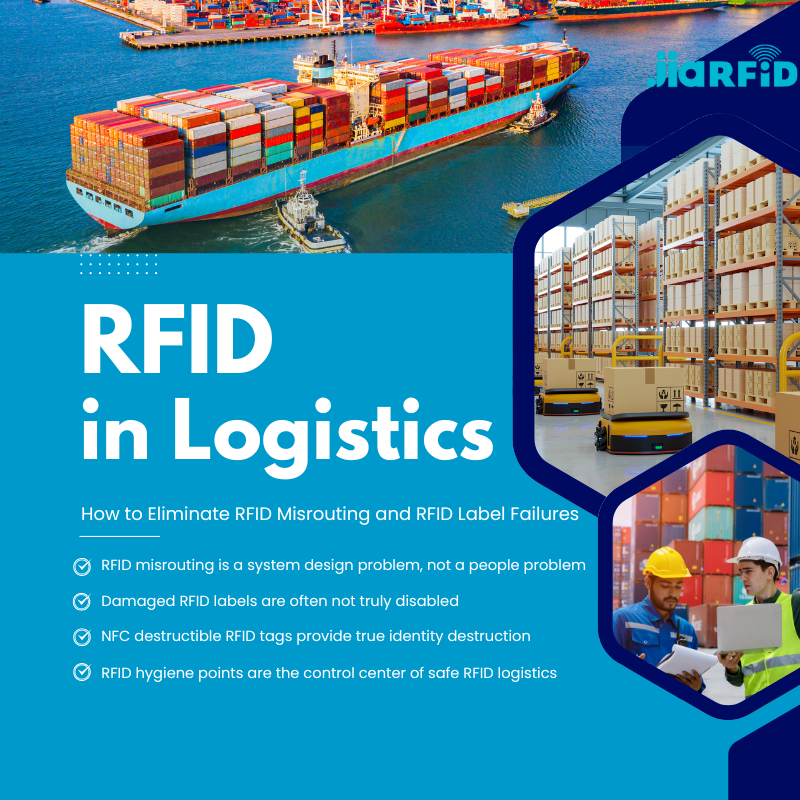
Qu'est-ce que la RFID UHF ?
Table des matières
Introduction
RFID UHF (Identification par radiofréquence ultra-haute fréquence) est une technologie d'identification de pointe qui gagne du terrain dans divers secteurs. Du commerce de détail à la logistique, en passant par les soins de santé et l'agriculture, sa capacité à permettre un échange de données rapide et sans contact transforme le mode de fonctionnement des entreprises.
Que vous découvriez la RFID pour la première fois ou que vous souhaitiez approfondir vos connaissances, ce guide vous expliquera tout ce qu'il faut savoir. RFID UHF est, comment cela fonctionne, ses applications et pourquoi il s'agit d'une technologie incontournable en 2025.

Qu'est-ce que la RFID UHF ?
L'UHF RFID, abréviation de « Ultra-High Frequency Radio Frequency Identification » (identification par radiofréquence ultra-haute fréquence), est une technologie de communication sans fil qui utilise les ondes radio pour identifier et suivre les étiquettes apposées sur des objets. Il s'agit de l'une des trois principales catégories de fréquences utilisées dans la technologie RFID, les deux autres étant la basse fréquence (LF) et la haute fréquence (HF).
La bande UHF fonctionne généralement dans la gamme de fréquences comprise entre 860 MHz et 960 MHz et est bien connue pour :
- Portées de lecture plus longues (jusqu'à 12 mètres ou plus)
- Transmission plus rapide des données
- Capacité de lecture en masse
En termes plus simples, la RFID UHF est comme un “ code-barres surpuissant ” : elle ne nécessite aucune ligne de visée et permet de lire instantanément des centaines d'articles.
Comment fonctionne la RFID UHF ?
Pour comprendre le fonctionnement de la RFID UHF, examinons ses composants essentiels :
- Étiquettes RFID: Contiennent une puce électronique et une antenne qui stockent des données.
- Lecteurs RFID: Émettre des ondes radio et recevoir des données provenant d'étiquettes.
- Antennes : Améliorez le signal entre les étiquettes et les lecteurs.
- Intergiciels/logiciels : Traite et gère les données collectées.
Il existe deux principaux types de Étiquettes RFID UHF:
- Étiquettes UHF passives : Fonctionne grâce à l'énergie provenant du signal du lecteur ; moins cher et couramment utilisé.
- Étiquettes UHF actives : Alimenté par batterie ; adapté aux applications longue portée et en temps réel.
Fonctionnalité clé :
- Le lecteur émet un signal dans la bande UHF.
- L'étiquette reçoit de l'énergie, s'allume et renvoie ses données.
- Le lecteur collecte ces données et les envoie à un système backend pour traitement.
Le système peut lire plusieurs étiquettes simultanément, même à grande vitesse, ce qui rend la technologie RFID UHF idéale pour les environnements dynamiques tels que les bandes transporteuses ou les stocks à rotation rapide.
Avantages de la technologie RFID UHF
Pourquoi la technologie RFID UHF connaît-elle un tel succès ? Parce qu'elle répond aux défis concrets liés au suivi et à l'automatisation. Voici ses principaux avantages :
- Longue portée de lecture : Jusqu'à 12 mètres, même dans des environnements difficiles
- Lecture en vrac : Lisez des centaines de balises en quelques secondes
- Rentable : Les étiquettes passives sont abordables pour une utilisation à grande échelle.
- Visibilité en temps réel : Mises à jour instantanées sur les mouvements de stocks et d'actifs
- Hors ligne de mire : Pas besoin de scanner directement comme avec les codes-barres
- Évolutivité : Convient aux petites opérations ou aux chaînes d'approvisionnement mondiales
En bref, cela améliore l'efficacité, la précision et l'automatisation, qui sont les piliers essentiels des entreprises modernes.
Applications courantes de la RFID UHF
La technologie RFID UHF s'est imposée comme une technologie clé dans les systèmes modernes d'automatisation et de suivi, offrant une portée, une vitesse et une polyvalence exceptionnelles. Sa capacité à lire simultanément des centaines d'étiquettes à longue distance la rend indispensable dans un large éventail de secteurs.
Vente au détail
- Contrôle des stocks
- Systèmes antivol
- Paiement automatisé
- Mise à jour des stocks en temps réel
Logistique et chaîne d'approvisionnement
- Suivi des expéditions
- Gestion des palettes
- Opérations de transbordement
- Preuve de livraison
Fabrication
- Suivi des travaux en cours (WIP)
- Contrôle qualité
- Surveillance des équipements
Soins de santé
- Bracelets pour patients
- Suivi des équipements
- Stock pharmaceutique
Agriculture
- Surveillance du bétail
- Suivi des équipements agricoles
- Systèmes d'irrigation intelligents
Bibliothèques et éducation
- Suivi des livres
- Gestion des actifs du laboratoire
- Contrôle d'accès
Quel que soit le secteur d'activité, la technologie RFID UHF offre une visibilité, une efficacité et une traçabilité en temps réel.
RFID UHF vs RFID HF et LF – Principales différences
| Fonctionnalité | LF (Basse Fréquence) | HF (Haute Fréquence) | UHF (Ultra-Haute Fréquence) |
|---|---|---|---|
| Fréquence | 125-134 kHz | 13,56 MHz | 860-960 MHz |
| Plage de lecture | ~10 cm | ~1 m | Jusqu'à 12 m |
| Vitesse des données | Lent | Modéré | Rapide |
| Coût | Faible | Modéré | Variable |
| Cas d'utilisation | Suivi des animaux | Paiements sans contact | Chaîne d'approvisionnement, commerce de détail, logistique |
La technologie RFID UHF offre la plus longue portée de lecture et les performances les plus rapides, ce qui la rend idéale pour les environnements à rythme rapide et le suivi de volumes importants.
Normes et réglementations relatives à la technologie RFID UHF
Des normes régissent l'utilisation mondiale de la RFID UHF afin d'assurer la compatibilité :
- EPCglobal Gen2 / ISO 18000-6C : Norme industrielle pour la RFID UHF passive
- FCC (États-Unis) : Fonctionne dans la bande 902-928 MHz
- ETSI (Europe) : Fonctionne dans la bande 865-868 MHz
- Autres régions : Varient légèrement en fonction des réglementations en matière de télécommunications.
Il est essentiel de veiller au respect des réglementations régionales en matière de fréquences lors du déploiement mondial de la technologie RFID UHF.
Types d'étiquettes RFID UHF
Étiquettes RFID UHF passives
- Le plus courant
- Rentable
- Utilisé dans le commerce de détail, la logistique, etc.
Étiquettes RFID UHF actives
- Alimenté par batterie
- Portée plus longue
- Utilisé dans le suivi des actifs de grande valeur
Balises semi-passives (BAP)
- Assisté par batterie pour de meilleures performances
Facteurs de forme des balises
- Inlays
- Étiquettes
- Étiquettes rigides
- Étiquettes robustes pour métaux ou environnements difficiles
Choisissez le type d'étiquette en fonction de votre environnement, de vos besoins en matière de portée et de votre budget.
Défis et limites de la RFID UHF
Comme toute technologie, la RFID UHF n'est pas parfaite. Voici les éléments à prendre en considération :
- Interférences métalliques et liquides : Peut bloquer ou déformer les signaux
- Facteurs environnementaux : Les températures extrêmes peuvent affecter les performances.
- Limitations de la ligne de visée : Les étiquettes empilées de manière dense peuvent ne pas être lues de manière fiable.
- Coût initial : La mise en place d'infrastructures peut être coûteuse.
- Surcharge de données : Nécessite un logiciel robuste pour gérer la collecte de données à grande échelle.
Mais avec une planification minutieuse, ces limitations peuvent être minimisées, voire totalement atténuées.

Tendances futures en matière de RFID UHF (2025 et au-delà)
La technologie RFID UHF n'est pas seulement là pour rester, elle évolue rapidement. Parmi les tendances, on peut citer :
- Intégration avec l'IoT : Capteurs intelligents + RFID = informations précieuses sur les données
- Systèmes RFID basés sur le cloud : Gérez vos balises où que vous soyez
- IA et apprentissage automatique : Analyse prédictive à l'aide de données RFID
- Villes intelligentes et infrastructures : Flux de circulation, gestion des déchets, etc.
- Industrie 4.0 : Automatisation industrielle en temps réel et jumeaux numériques
Avec des coûts réduits et des performances améliorées, on peut s'attendre à une adoption massive dans tous les secteurs d'ici la fin de la décennie.
La technologie RFID UHF est-elle adaptée à vos besoins ?
La technologie RFID UHF est une technologie puissante et évolutive qui peut aider votre entreprise à réduire les processus manuels, à limiter les pertes et à améliorer la visibilité. Que vous gériez un entrepôt ou suiviez des appareils médicaux de grande valeur, les avantages de la capture de données à longue portée et à haut débit changent la donne.
Mais, comme pour toutes les technologies, le succès réside dans la compréhension de ses atouts et dans son utilisation correcte.
Prêt à découvrir la technologie RFID UHF pour votre entreprise ? Commencez par consulter un fournisseur de solutions RFID de confiance ou mener un programme pilote pour évaluer vos besoins.
FAQ sur la technologie RFID UHF
Que signifie « RFID UHF » ?
UHF RFID signifie « identification par radiofréquence à ultra-haute fréquence ». Il s'agit de systèmes RFID qui fonctionnent dans la gamme de fréquences 860-960 MHz et sont capables de lire des étiquettes à plusieurs mètres de distance.
Comment fonctionne la RFID UHF ?
Les systèmes RFID UHF utilisent des ondes radio pour communiquer entre un lecteur et une étiquette. Le lecteur envoie un signal qui alimente les étiquettes passives, qui renvoient ensuite leurs données au lecteur. Cela permet une identification rapide et sans fil des objets sans avoir besoin d'une ligne de visée directe.
Quelle est la portée d'un système RFID UHF ?
Les systèmes RFID UHF ont généralement une portée de lecture de 3 à 12 mètres (10 à 40 pieds) pour les étiquettes passives. Les étiquettes actives équipées de piles peuvent étendre considérablement la portée, parfois jusqu'à 100 mètres ou plus.

Ray Zhou
Cet article a été rédigé par Ray Zhou, un expert en technologie RFID ayant plus de 10 ans d'expérience dans le secteur.
Commentaires
- Sur les étiquettes RFID en métal
- Étiquettes de disque RFID
- Étiquettes RFID pour pièces de monnaie
- Étiquettes RFID pour animaux
- Étiquettes RFID pour bijoux
- Étiquettes RFID pour blanchisserie
- Étiquettes RFID pour bibliothèques
- Étiquettes RFID pour véhicules
- Étiquettes RFID en bois
- Colliers de serrage et étiquettes RFID pour cadenas
Produits phares

La RFID dans la logistique : comment éliminer les erreurs d'acheminement RFID et les défaillances des étiquettes RFID
La RFID dans la logistique est bien plus qu'un simple outil permettant d'accélérer les processus. Elle est devenue un élément clé du fonctionnement des chaînes d'approvisionnement modernes.

Qu'est-ce que la gestion des déchets par RFID ?
Imaginez une ville où chaque poubelle parle – pas littéralement – mais grâce à une minuscule puce qui indique au système quand elle est pleine, quand elle est vidée et où elle a été emmenée. C'est ce que fait aujourd'hui la gestion des déchets par RFID.

Qu'est-ce qu'un joint de boulon et quelles sont ses applications ? | Guide complet
Dans le cadre du commerce mondial et de la logistique, les scellés à boulon jouent un rôle crucial pour assurer la sécurité et la conformité des cargaisons. Ces dispositifs, petits mais puissants, sont conçus pour verrouiller les conteneurs d'expédition, les remorques et les portes de chargement à l'aide d'un mécanisme d'inviolabilité.

Qu'est-ce qu'un protecteur de carte RFID ? Avantages, cas d'utilisation et guide d'achat
La technologie RFID (identification par radiofréquence) est partout : dans vos cartes de crédit, vos badges d'identification, vos titres de transport, vos clés de chambre d'hôtel, etc. Elle offre rapidité et commodité, mais elle ouvre également la porte à un nouveau type de vol numérique appelé "skimming" (écrémage). C'est là qu'intervient un protecteur de carte RFID.

Bracelets RFID pour événements : Guide d'achat en gros pour les organisateurs
Les bracelets RFID pour les événements deviennent la solution de choix pour les organisateurs qui ont besoin d'une entrée plus rapide, d'une prévention de la fraude et de paiements sans numéraire lors de concerts, de festivals et d'événements sportifs. Contrairement aux billets en papier ou aux codes QR, ces bracelets intelligents utilisent des puces intégrées pour rationaliser l'accès, sécuriser les transactions et améliorer l'expérience des visiteurs.

Comment l'étiquette RFID sur le pare-brise améliore le contrôle d'accès des véhicules et les systèmes de péage
Dans le monde rapide d'aujourd'hui, l'identification des véhicules doit être rapide, sûre et sans contact. Un tag RFID sur le pare-brise offre exactement cela - un moyen fiable de gérer les péages, les parkings et les accès aux barrières sans arrêter les véhicules.
Mots clés
BLOGS CONNEXES

La RFID dans la logistique : comment éliminer les erreurs d'acheminement RFID et les défaillances des étiquettes RFID
La RFID dans la logistique est bien plus qu'un simple outil permettant d'accélérer les processus. Elle est devenue un élément clé du fonctionnement des chaînes d'approvisionnement modernes.

Qu'est-ce que la gestion des déchets par RFID ?
Imaginez une ville où chaque poubelle parle – pas littéralement – mais grâce à une minuscule puce qui indique au système quand elle est pleine, quand elle est vidée et où elle a été emmenée. C'est ce que fait aujourd'hui la gestion des déchets par RFID.

Qu'est-ce qu'un joint de boulon et quelles sont ses applications ? | Guide complet
Dans le cadre du commerce mondial et de la logistique, les scellés à boulon jouent un rôle crucial pour assurer la sécurité et la conformité des cargaisons. Ces dispositifs, petits mais puissants, sont conçus pour verrouiller les conteneurs d'expédition, les remorques et les portes de chargement à l'aide d'un mécanisme d'inviolabilité.




